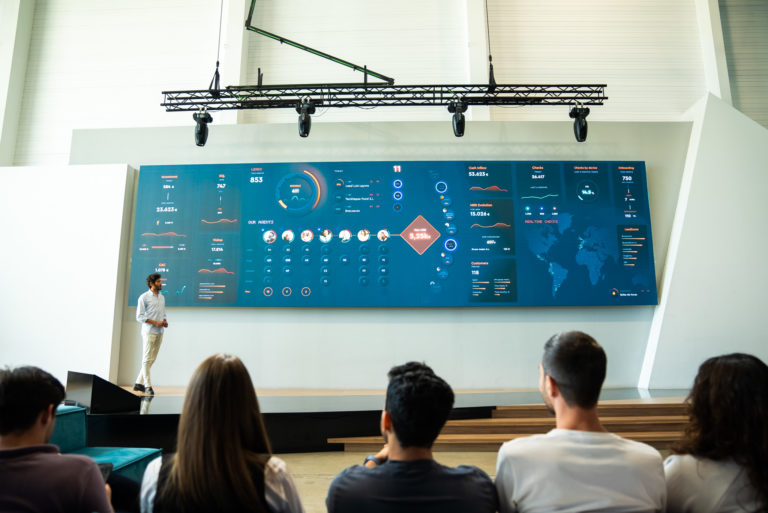Data literacy

Our brain is visual. The human being reacts better to visual signals, processing an image 60,000 times faster than text. But why does this happen? Humans have a very small working memory, so it is necessary to reduce the cognitive load to a minimum by using certain standards and avoiding unnecessary excesses, i.e. avoiding over-information.
This is more common than we might think. Companies generate thousands of data every day. Each department works with the information they extract from the data sources they work with on a daily basis (be it ERP, CRM, SAP, social networks, benchmarking tools, etc.); however, how do we cope with such a torrent of information? People, on their own, do not have such capacity.
Many companies have already opted for a company culture where data analytics is normalized, where it is part of the routine, part of everyday life and, above all, where workers perceive it as something positive, accessible and motivating.
This is where data literacy comes into play. This term refers to the ability to read and analyze data, to understand it in order to extract useful information for the performance of our business activities and good decision making.
According to the study “Data Literacy Index“, developed by the University of Pennsylvania, IHS Markit and Qlik, the ability of a company’s employees who are trained in this field achieve better revenues and an increase of up to 5% in business valuation.
The understanding and correct interpretation of the data is as important as the quality of the data.
For this reason, today I want to emphasize the importance of data visualization, because it greatly facilitates their understanding. It is something that seems obvious, yes, but there is still a lot of work to be done. As the Data Literacy Project points out, the great challenge in the Fourth Industrial Revolution is not to capture data, but to convert it into actionable information. Companies in all industries need employees to gain insights from data to maintain their value and drive competitive advantage.
The benefits of data visualization in work teams
Companies often make the mistake of not extending the data culture throughout the organization. In many cases, the information remains only in the management teams and this means that we do not exploit the full potential that data provides. In other words, work teams do not have a global and transversal vision of the company.

Surely you have heard on many occasions the Chinese proverb: “Give a man a fish, and he eats today. Give him a rod and teach him to fish and he will eat for the rest of his life”. If we apply it to our company, if our employees have the knowledge to be able to analyze and interpret data, they will be able to work autonomously, make their own decisions and, of course, feel much more motivated. And that is where the road to success begins!
Keys to making your team data literate
It is normal for companies to have doubts such as: do we need our employees to be experts in analytics? The answer is no. We have Business Intelligence solutions at our fingertips, such as business dashboards, which make information much more accessible and easier to understand.
Centralizing data gives us a more accurate and global view of our business.
Dashboards are a great ally for any business, regardless of the format in which we consume them (either videowall, desktop, mobile, tablet… I give you some tips on which dashboard format to choose depending on the use we are going to give it in this video).
Another important point is to understand that it is not only necessary to speak the “data language“, but also the same dialect. Let me explain: how many times have I seen companies that have well-connected departments that use data to manage but do not speak the same dialect, because one department calls the same thing “closing”, another “conversion”, another “signature” and another “customer”, for example. Unifying terminologies is an important part of a company’s data literacy.
And one last fundamental point for data literacy is that the data must be correct, accurate and consistent in all areas or departments. There cannot be different figures for the same data. And it happens. It happens a lot. No one will want to talk about data if the data is not accurate.



